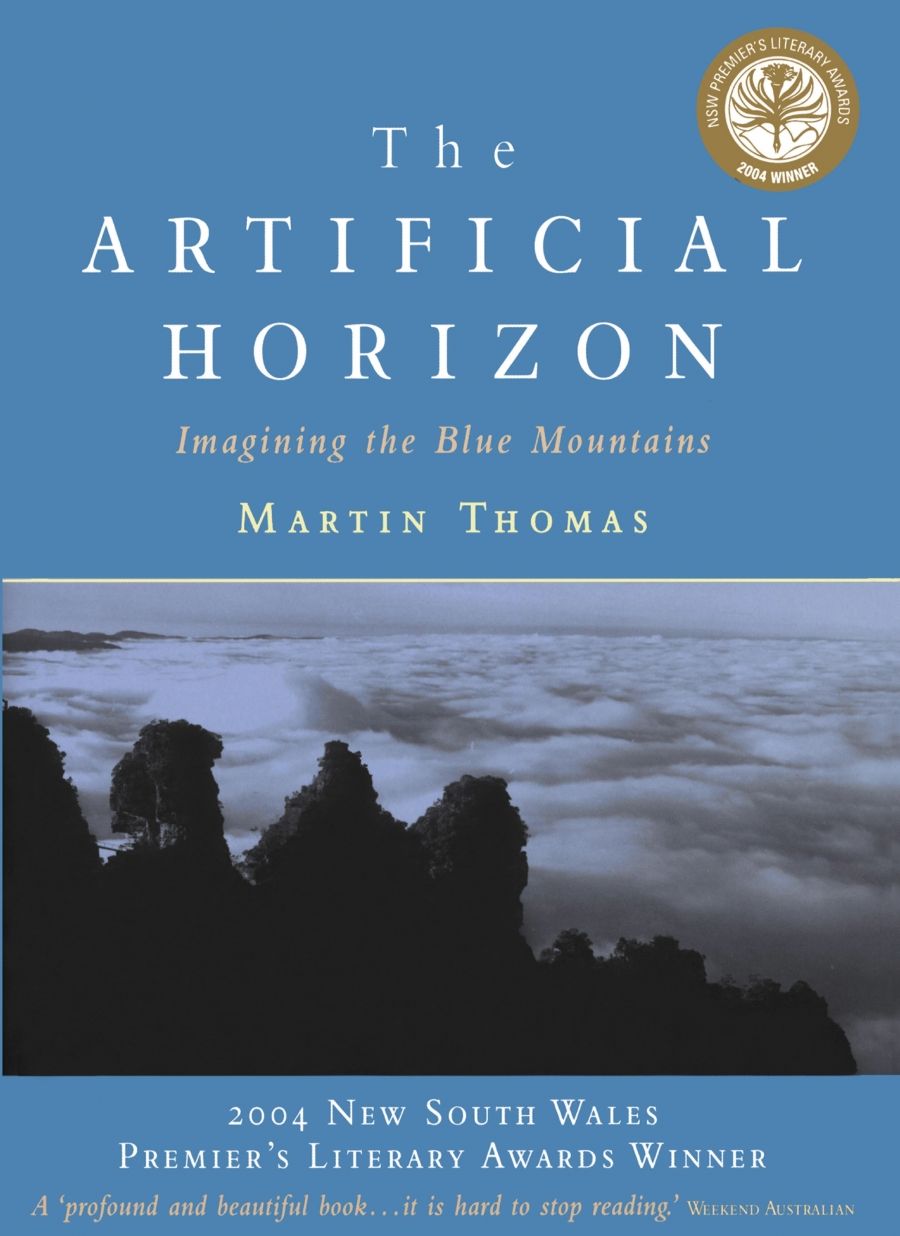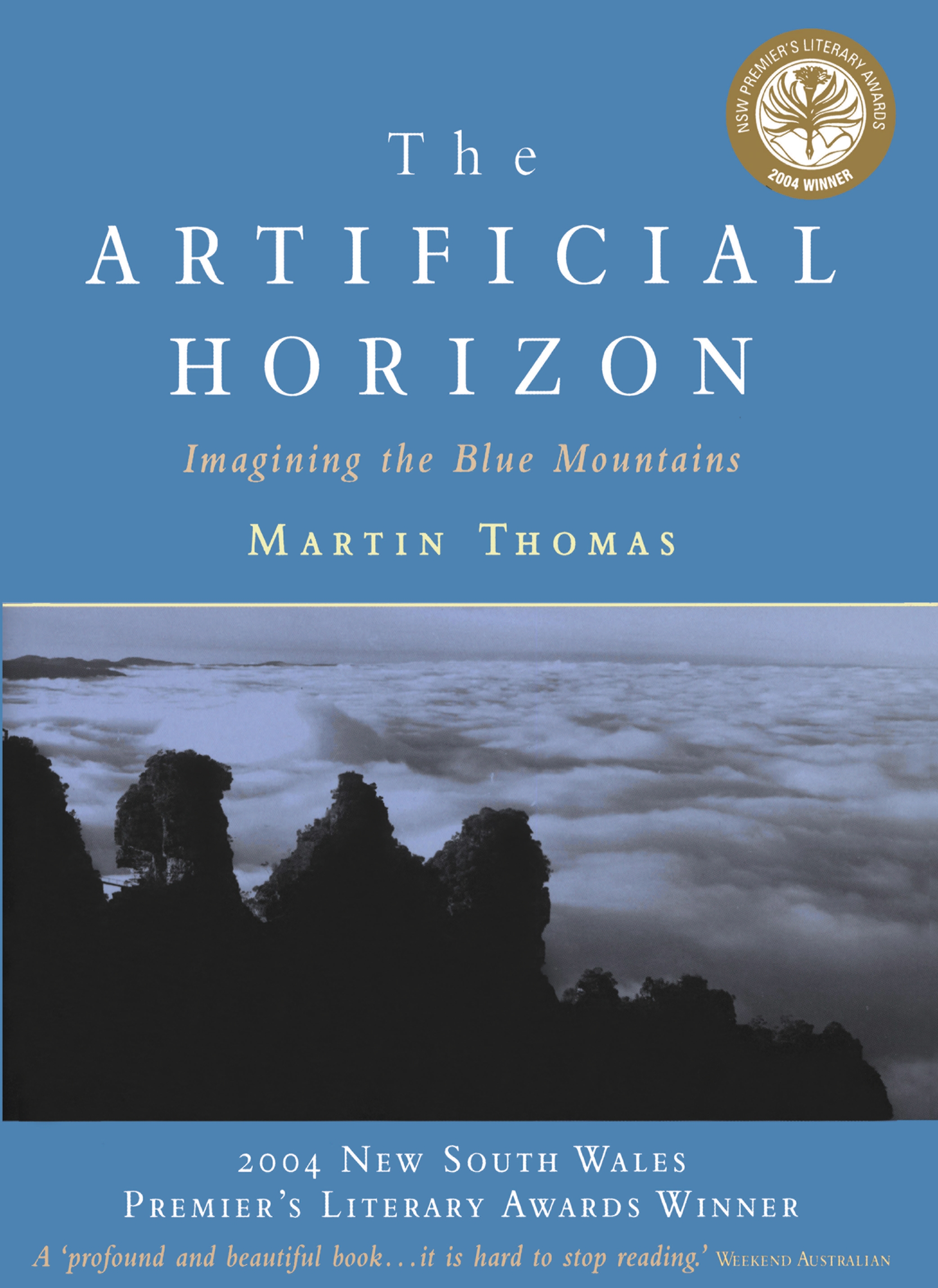
- Free Article: No
- Contents Category: Australian History
- Review Article: Yes
- Online Only: No
- Custom Highlight Text:
The Blue Mountains glimmer on many horizons. For Sydney-siders, they are a blue haze that promises a weekend away among the gums and spooky grand hotels. For visitors from further afield, they offer wilderness supported by tourist kitsch: statues made from chicken wire; bogus Aboriginal legends; 3-D movies; and, best of all, the scenic railway, a sardine can on a high wire that sways across the valley beneath Echo Point.
The mountains are a place of beginnings and endings. In 1813 three white men made what they called, in their blindness and arrogance, The First Crossing of the mountains. Convicts tried to cross them, too, searching for China or for colonies of whites who were free and happy. A century later, the mountains were becoming a place for final steps and breaths. People leapt to their deaths from beauty spots. Descendants of the first inhabitants of this breathtaking place, including the Darug and Gundungurra people, still live there, although in public discourse the Aboriginality of the mountains is more often inscribed in inanimate objects such as The Three Sisters or the Orphan Rock.
- Book 1 Title: The Artificial Horizon
- Book 1 Subtitle: Imagining the Blue Mountains
- Book 1 Biblio: MUP, $49.95hb, 313pp
- Book 1 Cover Small (400 x 600):

- Book 1 Cover (800 x 1200):

These contemporary and historical places, people, myths and journeys are just some of the terrain covered by historian and cultural studies scholar Martin Thomas in this ambitious and personal project. Thomas’s research was sparked by his fascination with surveyor Major Thomas Mitchell’s 1828 painting of an Aboriginal man gazing out at the view from Mount Jellore. Thomas writes that he was haunted by the figure that, he believes, Mitchell inserted, retrospectively, into the landscape. Why did the artist put the Aboriginal man there? Did Mitchell paint a ‘native’ to titillate English viewers, or could the unclad man ‘suggest an ambivalence on the part of the artist about a process of dispossession in which he is personally engaged’? Thomas grew up in the Blue Mountains and now lives in Katoomba. His research is ‘a personal attempt to engage imaginatively with the country that produced me’. In this sense, Artificial Horizon is an important contribution to a new genre of Australian books about landscape, myth and history, such as Ross Gibson’s Seven Versions of an Australian Badland (2002), Peter Read’s Belonging (2000) and Rebe Taylor’s Unearthed (2002). It is another attempt by a white Australian to use a particular place to examine the intertwined and unsettled histories of colonised and coloniser; to consider ‘the ethical challenges of inhabiting this colonised country’ and to strengthen personal attachment to a cherished location.
Thomas’s sources are wide – both archival and oral, popular and scholarly – and he uses them to explore the mountain’s ‘double presence: semiotic and topographical’. His interdisciplinary approach challenges old-fashioned history-making conventions. For instance, Thomas argues repeatedly for ‘a more sympathetic treatment of myth in historical practices’. One of his aims is to expose the mythical foundations of non-Aboriginal belief systems, such as science itself. Thomas is a competent art historian and many of the works he discusses, such as paintings by Mitchell and Von Guerard, are reproduced in colour. The integration of text and visual sources is one of the pleasures of this book. Another strength is Thomas’s writing itself. His prose is clear and direct. Some of the passages describing the author’s mountain journeys have the vividness of exceptional journalism.
The book is divided into an introduction, five ‘passages’ and a coda. All have witty, sometimes provocative, titles. Thomas explains that his work is presented as a series of fragments arranged around themes and inspired by the metaphor of the labyrinth. It moves swiftly from past to present. The text leaps from a passage on grazier Gregory Blaxland’s fascination with the instrument that created an artificial horizon, to a description of viewing The Edge at Katoomba’s Maxivision cinema. Such a rapid switch is supposed to ‘mock the historian’s contrivance of chronological order’, but it can also inhibit the reader’s desire for understanding and insight. This effect is especially strong in the book’s opening passages, when Thomas crowds the horizon with a dizzying array of ideas and metaphors.
The final two passages, though, are outstanding. The fourth juxtaposes the way Aboriginal presence in the mountains has been encoded in Stone Age ‘mortification landmarks’ such as The Three Sisters rocks with the history of the Aboriginal community on the fringes of Katoomba which, in 1957, was displaced by the construction of an ill-fated racetrack. The final passage examines the mountains as a suicide spot through the fascinating story of the mysterious death, also in 1957, of Vere Gordon Childe, then the world’s most famous prehistorian.
In these pages, the reader is able to share Thomas’s original vision and glimpse exciting new horizons for historical research.


Comments powered by CComment